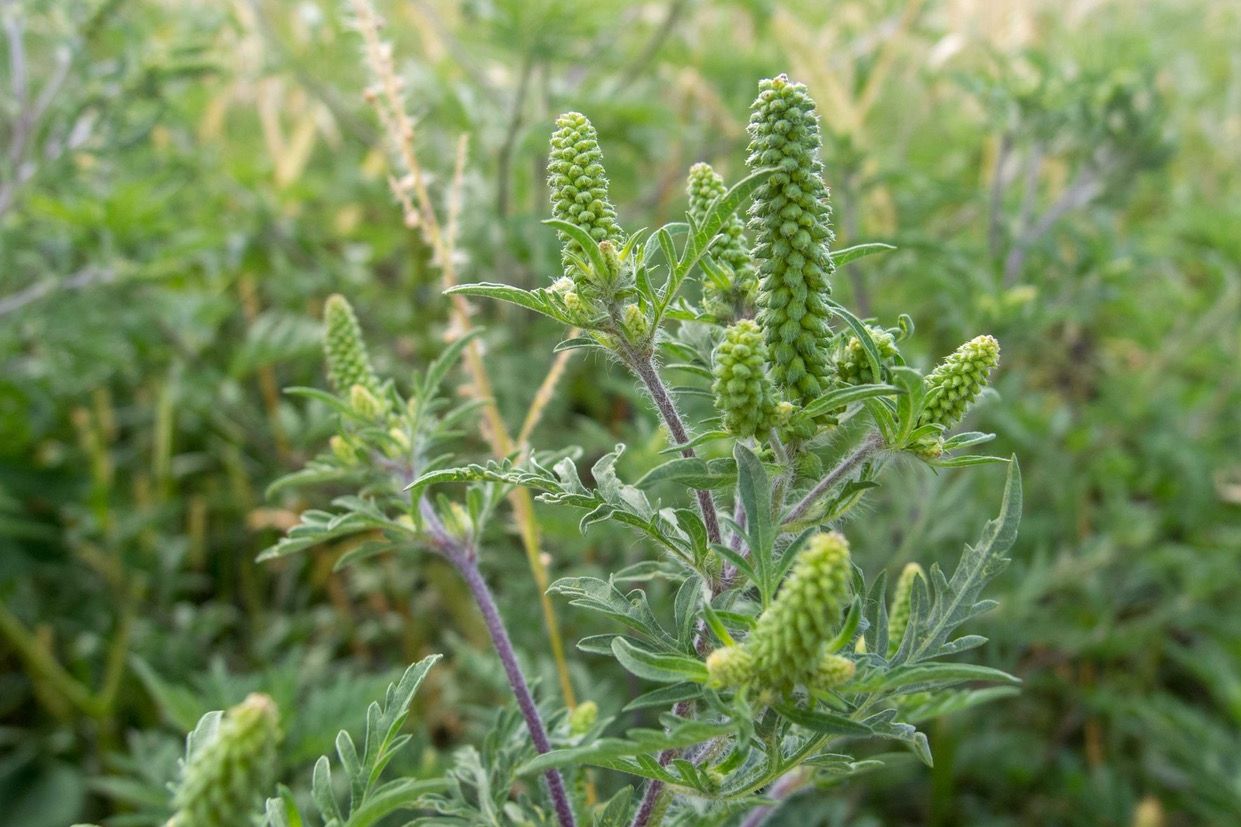
(Vienna, 25 July 2018) Bad news for pollen allergy sufferers who are sensitive to ragweed: the hot and humid weather has created ideal growing conditions, so that the ragweed season is about to start in Austria. Although most of the ragweed (also known as ambrosia or bursage) has not yet started to blossom in the countries to the south-east of Austria, isolated plants in particularly favourable locations are already in flower. All the signs therefore indicate that the 2018 ragweed pollen season will start earlier than usual. Experts from the Austrian Pollen Monitoring Service at MedUni Vienna are consequently advising allergy sufferers to keep a close eye on pollen count forecasts.
The first ragweed pollen count is the result of ragweed pollen carried long distances from other countries, as well as the flowering of local plants. "The hot and humid weather has created ideal growing conditions for ragweed," explains Katharina Bastl from MedUni Vienna's Austrian Pollen Monitoring Service, "and the plants are currently in various stages of development: young plants without pistils and more developed plants with immature pistils make up most of the current picture. But there is evidence that some plants are already flowering, so that local pollen hot-spots are possible."
The areas affected by early ragweed pollen are in the South-East of Austria and especially the Federal States of Burgenland, Vienna, Lower Austria, Styria, Carinthia and parts of Upper Austria. Approximately 25 – 30% of pollen allergy sufferers in Eastern Austria react to ragweed.
High counts from August to October
On average, the ragweed pollen season starts in the affected regions of Austria in the middle of August and runs until the middle of October. This year the pollen count might be higher and start earlier, since local counts are favoured by the hot, humid growing conditions and there will be an overlap with the mugwort pollen season, say the experts. However, other decisive factors are the extent and frequency of long-distance transport, which will exacerbate pollen counts in August and September.
Cross-reaction with mugwort
The imminent release of mugwort pollen can aggravate symptoms, since both plants belong to the aster family and a cross-reaction is possible. The flowering of mugwort has not yet reached its peak. Normally the highest mugwort pollen count is expected in the middle of August throughout Austria but, in 2018, this might move forward to the beginning of August, that is to say during the coming week.
Similarly, there can be a cross-reaction with other plants from the same family, such as chamomile, arnica, daisies, chrysanthemums and sunflowers. Pollen allergy sufferers can therefore generally expect a particularly difficult season this year in terms of weed pollen. All relevant information is currently available on the website of MedUni Vienna's Austrian Pollen Monitoring Service: (European maps on: www.pollenwarndienst.at).